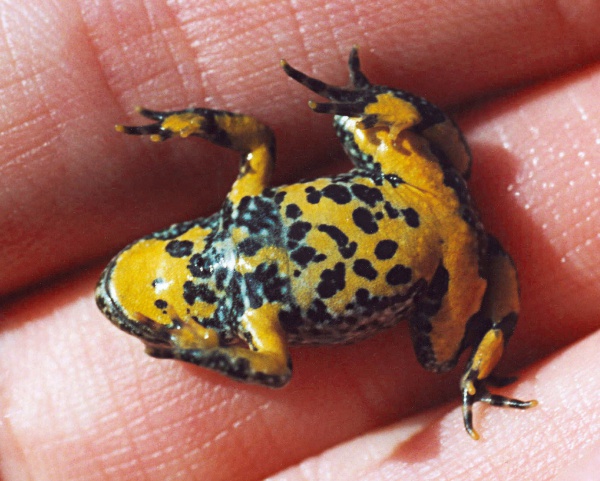Facts About Yellowbelly Toad
The yellow-bellied toad, scientifically known as *Bombina variegata*, is a captivating amphibian that belongs to the fire-bellied toad family. These small toads measure between 28 and 56 mm in length and weigh approximately 2.3 to 12 grams. They are easily identifiable by their distinctive coloration: a grey-brown dorsal side and a vibrant yellow or orange ventral side adorned with unique spots. Their bodies are compact, with rounded snouts, heart-shaped pupils, and skin covered in numerous raised warts.
Male yellow-bellied toads have longer forelimbs than females, a trait likely advantageous during mating and territorial disputes. The undersides of these toads exhibit varying patterns of yellow and black markings.
In their life cycle, yellow-bellied toads lay multiple clutches of eggs, with each clutch averaging about 73 eggs. The eggs are encased in a jelly-like substance and hatch within four days. The tadpoles grow quickly, reaching up to 55 mm in length, but they remain vulnerable to various aquatic predators. Males attract mates with gentle mating calls, despite lacking a vocal sac.
These toads thrive near water, originally preferring habitats along brooks and rivers. However, they have adapted well to human-altered environments, breeding in temporary water sources like puddles and small ditches. They are often found in quarries, clay and gravel pits, and other open areas with sparse vegetation and few predators.

 Serbia
Serbia